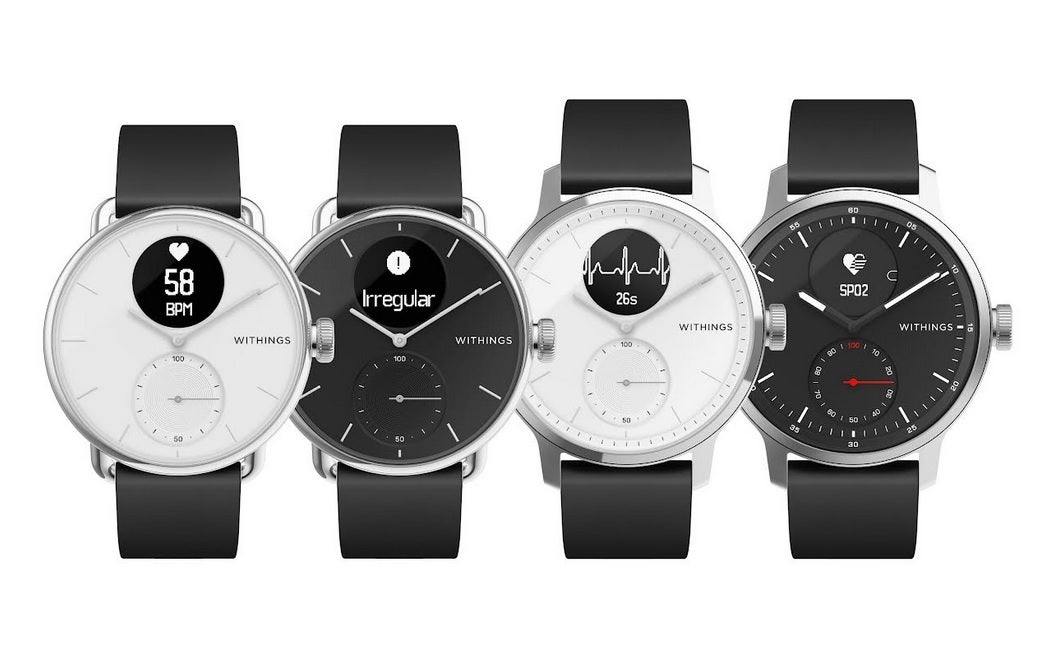Coming to the U.S. next month, the ScanWatch's medical-grade ECG, SpO2 monitoring gets FDA approval

French consumer electronics firm Withings announced this morning that its ScanWatch has become the first timepiece to receive FDA clearance to promote two medical-grade tests on a watch at one time. The FDA says that the ScanWatch can monitor a user's heart rate and search for atrial fibrillation (AFib) by performing an electrocardiogram (ECG). AFib can increase the risk of stroke and heart failure.
FDA approves the ScanWatch's SpO2 and ECG monitoring
The second medical grade test that the FDA has approved for the ScanWatch is the measurement of blood oxygen levels aka SpO2. This test measures the percentage of oxygen in someone's blood. A reading of 95% to 100% is considered normal. Some tests have concluded that people who have seriously low SPO2 readings could have COVID-19.

ScanWatch is coming to North America next month
As we said, the ScanWatch is the first smartwatch to simultaneously receive FDA approval to collect and record both ECG and SPO2 tests. The device also uses state-of-the-art technology to measure sleep and physical activity. The watch was helpful to many people around the world when it was first launched in Europe and Australia and next month it will become available in the U.S. via withings.com, BestBuy, and Amazon, priced at $279 (38mm) and $299 (42mm).
Mathieu Letombe, CEO of Withings says, "ScanWatch has been clinically validated to detect AFib and can aid in the detection of breathing disturbances at night, that can be signs of sleep apnea. It is our most ambitious medical watch to date and has the potential to benefit millions of people."
The executive adds, "ScanWatch has been clinically validated to detect AFib and can aid in the detection of breathing disturbances that can be signs of respiratory issues such as COPD and sleep apnea. It is our most ambitious medical watch to date and has the potential to benefit millions of people." The device has also been used to monitor COVID users remotely in a German hospital.
The ScanWatch battery can run for as long as 30 days without needing to be charged
ScanWatch was developed by sleep experts and cardiologists, and the accuracy of the watch has been validated in two studies. It features a stainless-steel case, a watch face made of durable sapphire, and is water-resistant up to 5ATM (165 feet); the battery can run for as long as 30 days without a charge.'
Withings' press release states, "With FDA Clearance of its SpO2 functionality, ScanWatch can be used to monitor blood oxygen levels and can be used to help detect if someone is experiencing issues from respiratory disorders such as COPD or COVID. ScanWatch can also detect the presence of nighttime breathing disturbances (a sign of sleep apnea) with an exclusive algorithm that analyzes blood oxygen levels, heart rate, movement, and respiratory rate, all collected via the accelerometer and optical sensors."
ScanWatch will also track your steps, calories, elevation, and workout routes (using connected GPS). It also can "automatically recognize more than 30 daily activities such
as walking, running, swimming, and cycling." The device syncs with the free Health Mate app which provides data and can schedule activity reminders, set goals, and manage achievements. In addition, Health Mate can be paired with more than 100 third-party apps, including Apple Health, Google Fit, Strava, and MyFitnessPal."
as walking, running, swimming, and cycling." The device syncs with the free Health Mate app which provides data and can schedule activity reminders, set goals, and manage achievements. In addition, Health Mate can be paired with more than 100 third-party apps, including Apple Health, Google Fit, Strava, and MyFitnessPal."
FDA approval is what sets some smartwatches apart from others. The regulatory agency puts such devices through a series of tests designed to root out those devices that are promoted as necessary to help users monitor important health metrics. But many have not been put through the paces by the FDA and as a result, their results can't be trusted. This is not the case with ScanWatch.
ScanWatch will be available next month with a choice of black or white faces.
Follow us on Google News














Things that are NOT allowed:
To help keep our community safe and free from spam, we apply temporary limits to newly created accounts: